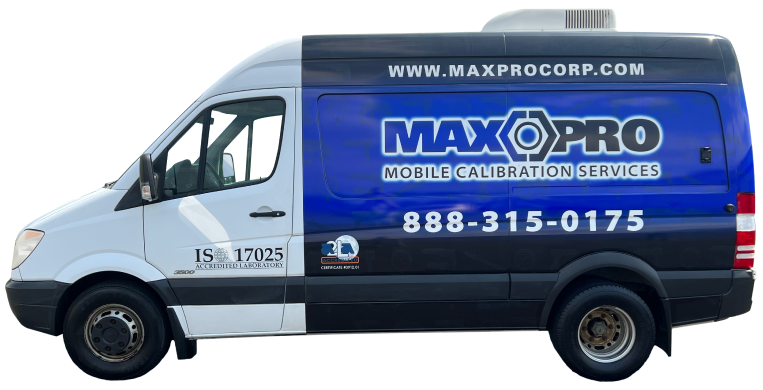America’s bridges need help.
 According to an April 2019 report by the American Road and Transportation Builders Association, an estimated 47,000 bridges in the U.S. need to be repaired – if not replaced outright – to meet future traffic demands.
According to an April 2019 report by the American Road and Transportation Builders Association, an estimated 47,000 bridges in the U.S. need to be repaired – if not replaced outright – to meet future traffic demands.
While this situation seems dire, the good news is that significant improvements in bridge construction and design over the past 20 years will lead to much sturdier bridges. In this blog, we’ll look at the updated standards for bolted connections in the bridge industry and the importance of calibration for bridge construction torque tools
What are the most common bridge construction torque tools?
 There was a time when bridge bolts were assembled with impact guns, which have no set torque accuracy, leading them to significantly under-torque or over-torque bolts, depending on how long the operator held the down the trigger. Most of America’s older bridges were assembled this way.
There was a time when bridge bolts were assembled with impact guns, which have no set torque accuracy, leading them to significantly under-torque or over-torque bolts, depending on how long the operator held the down the trigger. Most of America’s older bridges were assembled this way.
Bridge construction bolts – typically A325 or A490 bolts – have specific high load requirements and can be tested on a Calibore/Skidmore testing device or bolt tension calibrator.
However, the difference in modern bridge is that the tool to test these bolts must be a calibrated torque tool and not an impact gun.
When used in conjunction with the Calibore/Skidmore test, these bridge construction torque tools give operators the assurance they’re using the correct bolt load. The most common torque tool in use today is the calibrated pneumatic torque wrench.
The process would begin by using this tool to tighten a bolt in a Calibore/Skidmore to the required bolt-specified load. Once that is determined, the pneumatic torque wrench is set to that point.
The pneumatic torque wrench shuts off at that set point during the bolting process, so there is no guesswork by the operator in determining torque/bolt load. The pneumatic torque tool is calibrated to +/- 4% with a torque repeatability of +/- 2%. This ensures all bolts on the bridge are fastened to within acceptable tolerances of the specified and correct load.
The torque/tension specifications for the two most common bolt types are:
A325 Bolt Torque Chart (A325 Torque/Tension Specifications Sheet PDF)
A325 Bolt diameter – 1/2”
- Minimum bolt tension (lbs.) 12,000
- Maximum bolt tension (lbs.) 14,000
- Suggested tightening toque range (ft./lbs.) 100-120
A325 Bolt diameter – 5/8”
- Minimum bolt tension (lbs.) 19,000
- Maximum bolt tension (lbs.) 27,100
- Suggested tightening toque range (ft./lbs.) 200-250
A325 Bolt diameter – 3/4”
- Minimum bolt tension (lbs.) 28,000
- Maximum bolt tension (lbs.) 40,100
- Suggested tightening toque range (ft./lbs.) 355-425
A325 Bolt diameter – 7/8”
- Minimum bolt tension (lbs.) 39,000
- Maximum bolt tension (lbs.) 55,500
- Suggested tightening toque range (ft./lbs.) 570-685
A325 Bolt diameter – 1”
- Minimum bolt tension (lbs.) 51,000
- Maximum bolt tension (lbs.) 72,800
- Suggested tightening toque range (ft./lbs.) 850-1,025
A325 Bolt diameter – 1 1/8”
- Minimum bolt tension (lbs.) 56,000
- Maximum bolt tension (lbs.) 80,100
- Suggested tightening toque range (ft./lbs.) 1,060-1,250
A325 Bolt diameter – 1 1/4”
- Minimum bolt tension (lbs.) 71,000
- Maximum bolt tension (lbs.) 101,750
- Suggested tightening toque range (ft./lbs.) 1,495-1,775
A325 Bolt diameter – 1 3/8”
- Minimum bolt tension (lbs.) 85,000
- Maximum bolt tension (lbs.) 121,300
- Suggested tightening toque range (ft./lbs.) 1,960-2,350
A325 Bolt diameter – 1 1/2”
- Minimum bolt tension (lbs.) 103,000
- Maximum bolt tension (lbs.) 147,550
- Suggested tightening toque range (ft./lbs.) 2,600-3,100
A490 Bolt Torque Chart (A490 Torque/Tension Specifications Sheet PDF)
A490 Bolt diameter – 1/2”
- Minimum bolt tension (lbs.) 15,000
- Maximum bolt tension (lbs.) 18,000
- Suggested tightening toque range (ft./lbs.) 125-150
A490 Bolt diameter – 5/8”
- Minimum bolt tension (lbs.) 24,000
- Maximum bolt tension (lbs.) 39,000
- Suggested tightening toque range (ft./lbs.) 250-300
A490 Bolt diameter – 3/4”
- Minimum bolt tension (lbs.) 35,000
- Maximum bolt tension (lbs.) 50,100
- Suggested tightening toque range (ft./lbs.) 435-525
A490 Bolt diameter – 7/8”
- Minimum bolt tension (lbs.) 49,000
- Maximum bolt tension (lbs.) 69,300
- Suggested tightening toque range (ft./lbs.) 715-860
A490 Bolt diameter – 1”
- Minimum bolt tension (lbs.) 64,000
- Maximum bolt tension (lbs.) 90,900
- Suggested tightening toque range (ft./lbs.) 1,070-1,300
A490 Bolt diameter – 1 1/8”
- Minimum bolt tension (lbs.) 80,000
- Maximum bolt tension (lbs.) 114,450
- Suggested tightening toque range (ft./lbs.) 1,500-1,800
A490 Bolt diameter – 1 1/4”
- Minimum bolt tension (lbs.) 102,000
- Maximum bolt tension (lbs.) 145,350
- Suggested tightening toque range (ft./lbs.) 2,125-2,500
A490 Bolt diameter – 1 3/8”
- Minimum bolt tension (lbs.) 121,000
- Maximum bolt tension (lbs.) 173,250
- Suggested tightening toque range (ft./lbs.) 2,775-3,325
A490 Bolt diameter – 1 1/2”
- Minimum bolt tension (lbs.) 148,000
- Maximum bolt tension (lbs.) 210,750
- Suggested tightening toque range (ft./lbs.) 3,700-4,500
You can also find more details in the Specifications for Structural Joints Using ASTM A325 or A490 Bolts document prepared by the Research Council on Structural Connections.
If you have any questions about these bolting requirements or about any of our bridge construction torque tools, contact Maxpro today. We are a leading supplier of pneumatic, battery, electric and hydraulic torque tools and an ISO 17025 accredited torque calibration laboratory. Let us help you help get America’s bridges back in shape.





